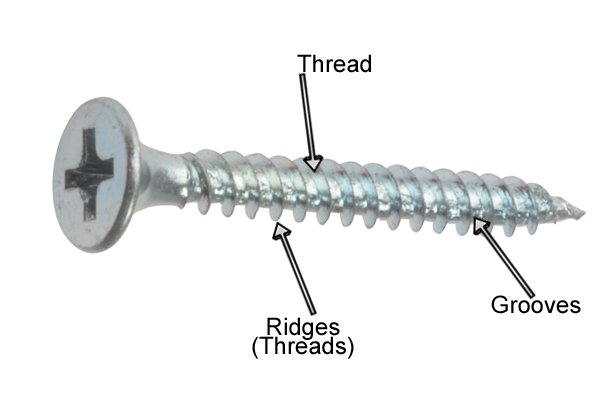When you are into plumbing industries one of the most commonly used terms you will find is NPT. But if you haven’t been able to figure out the meaning of this term or get confused about using the different sizes of nuts and tools, worry not here in this article we are going to explain what NPT is and why it came into existence into the plumbing industry.
We do know that to buy anything, we need to first understand the quantity that is being required, and for that we have come with universal units that remain uniform all over the world, just like the length of a meter would never differ wherever you go.
In the same way, NPT which National Pipe Tapered is the National American Standard for nuts, bolts and screws that are commonly used in plumbing pipes and fittings.
While these terms seem new, these standards were set way back in the 19th century by William Sellers which became America’s National Standard in 1864.
What Does NPT Mean In Plumbing
American National Pipe Tapered Thread, in short known as NPT is the most widely used connection and best known for the pipe thread enabling a strong mechanical joint with a hydraulic seal.

In addition, male and female thread makes a tight fit when they are screwed together and ensure no leaks. It is a custom to use Teflon tape or sometimes a special paste to seal. This fills the tiny gaps between the threads, making the connection super strong.
What are the various sizes of NPT?
The different sizes of pipe thread are based on an inside diameter in short called (ID) or flow size, for instance, ¼-18 NPT will be identified as a pipe thread of inside diameter 1/4 inch and 18 threads to the inch, which is made according to the NPT standard.
Below is a table showing variant sizes of NPT threads:
| Nominal Size (NPT) | Outer Diameter (inches) | Threads per Inch (TPI) |
| 1/8″ | 0.405 | 27 |
| 1/4″ | 0.540 | 18 |
| 3/8″ | 0.675 | 18 |
| 1/2″ | 0.840 | 14 |
| 3/4″ | 1.050 | 14 |
| 1″ | 1.315 | 11.5 |
| 1 1/4″ | 1.660 | 11.5 |
| 1 1/2″ | 1.900 | 11.5 |
| 2″ | 2.375 | 11 |
Different Types of NPT Threads
NPT (National Pipe Taper): This is designed with a slight taper or angle which helps create a tight seal when two pipes are joined together. The taper means that as you tighten the pipe they fit together more snugly that reduces the chances of leaks.
NPTF (National Pipe Taper Fuel): NPTF threads are similar to NPT threads but have a shallower taper. That is specifically designed for an application that involves a fuel or hydraulic system where a lighter seal is needed to prevent leak and ensure safety.
NPSC (National Pipe Straight Coupling): Unlike NPT threads, NPSC threads are straight and do not have any taper at all. They are mostly used in applications where a sealant or gasket is used to create a tight seal between pipes or fitting.
Common Mistakes and How to Avoid
NPT join sometimes can be prone to mistakes if not done correctly. One most common mistake is over tightening the fittings which can damage the thread and eventually lead it to leak. Therefore, it is essential to use a proper tool and techniques to tighten fittings to avoid excessive force.
Another mistake is using the wrong type of sealant or applying it incorrectly. Now this can compromise the seal and leaks in the end. To stop this always use sealant specifically designed for NPT tracks and follow the manufacturer’s instructions for the application.
Practical Applications of NPT in Plumbing
There are different practical applications of NPT in plumbing which I’ll be explaining to you in depth.
NPT in Pipe Fittings:
These types of threads are normally found in various pipe fittings used in plumbing systems. These fittings, available at a plumbing supply store, include elbow, tees, coupling, and adaptors as well.
The NPT set on these fittings allow them to securely connect to pipes that create reliable and secure plumbing. Whether it’s connecting different sections of pipes or branches of indifferent directions, NPT fitting plays an important role to ensure the integrity and functionality of a plumbing system.
Sealants and Techniques for NPT Joints:
To make sure that the watertight seal prevents leak in NPT joints, it is important to use the right sealant and technique.
Thread sealant compounds like pipe dope or thread sealant tape commonly known as teflon tape are applied to the mail threat before assembly to fill caps and enhance the sealing properties of the thread.
Additionally use the correct tightening technique like hand tightening followed by a quarter to a half turn with the wrench that helps achieve the proper seal without damaging the thread.
Conclusion
In short we can say that the National Pipe Thread is crucial in plumbing for creating a secure connection between pipe and fittings. Understanding its type like NPT, NPTF, and NPSC along with side sensitisation ensuring compatibility and reliability is also a necessary thing.
Proper sealant and techniques prevent leaks while avoiding common mistakes such as over tightening and other things can be a game changer thing.
Hope, the article was helpful for you thanks for being our faithful readers.😚
Also Read:

